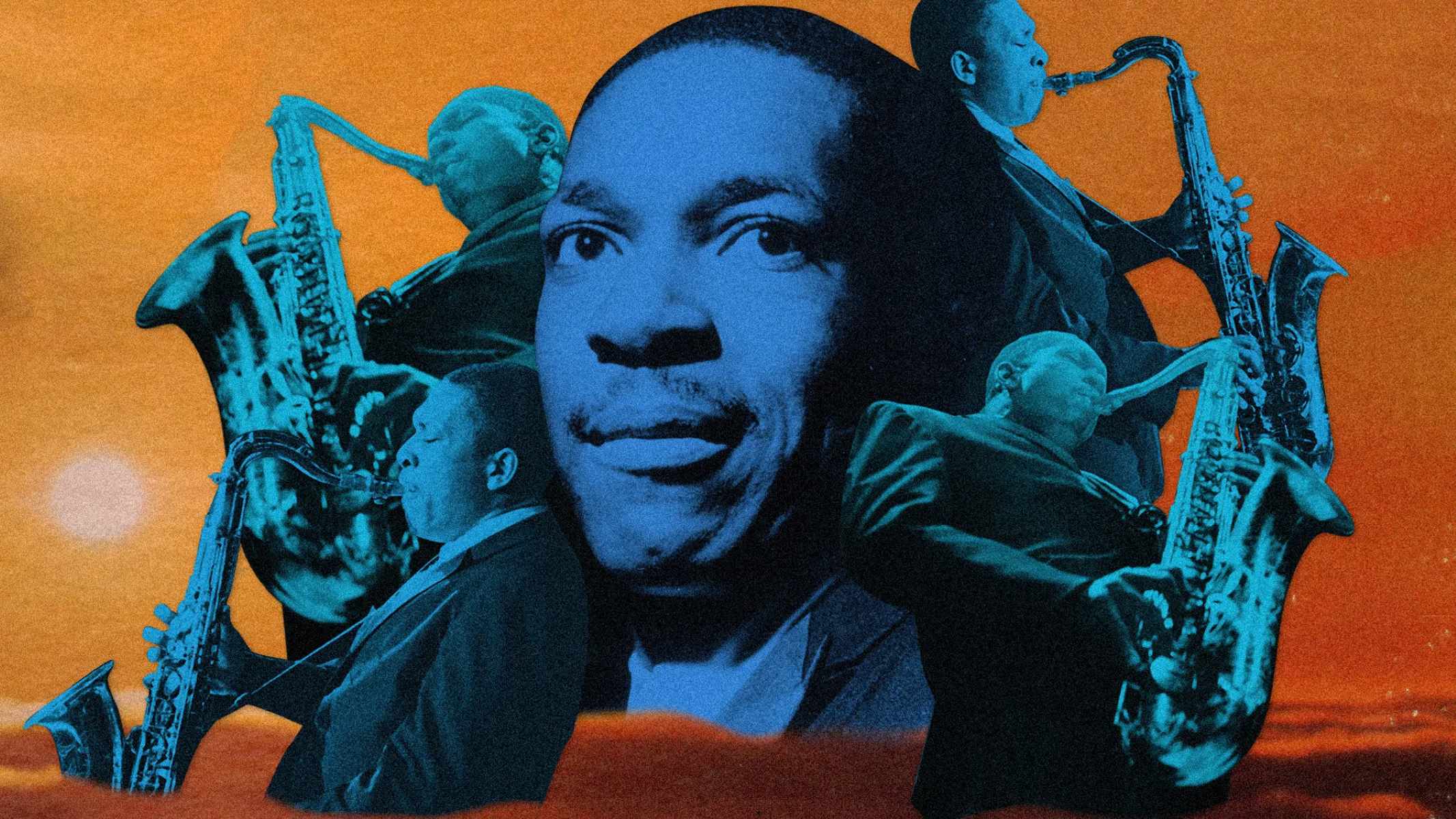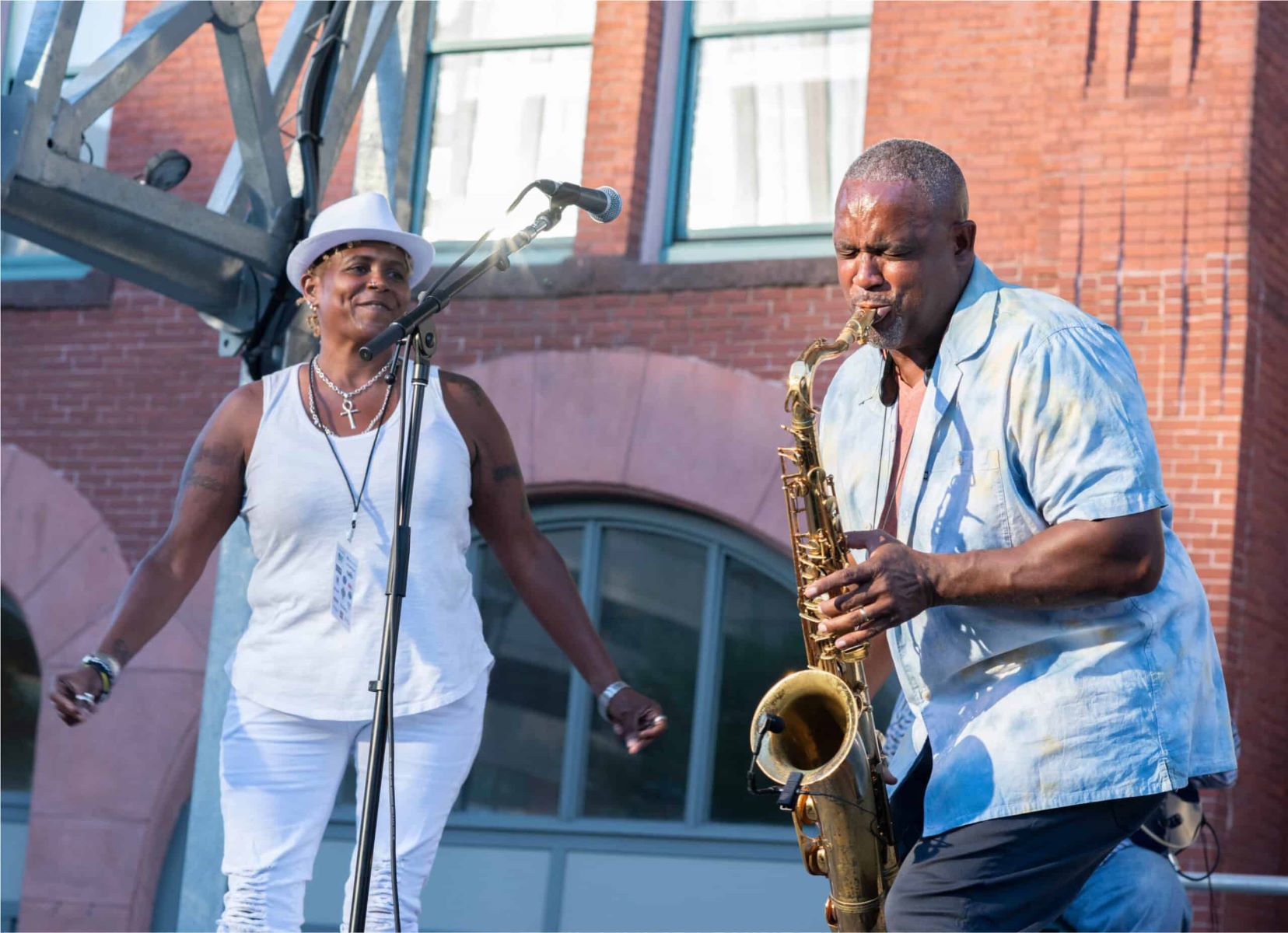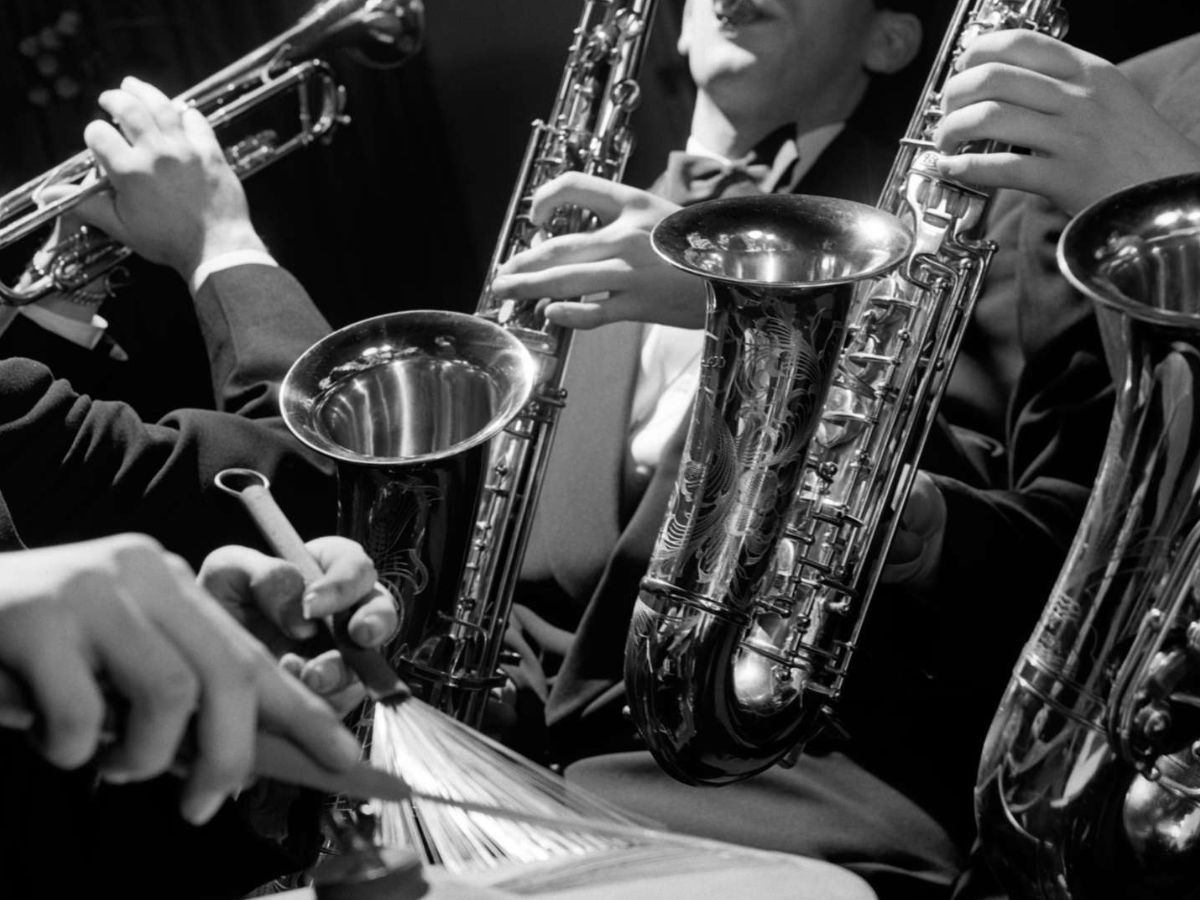

Jazz
Why Is Jazz Called Jazz
Modified: January 22, 2024
Discover the origins and evolution of Jazz, and unravel why this iconic musical genre earned the name "Jazz" through its syncopated rhythms and improvisational nature.
(Many of the links in this article redirect to a specific reviewed product. Your purchase of these products through affiliate links helps to generate commission for AudioLover.com, at no extra cost. Learn more)
Table of Contents
Introduction
Jazz is a truly unique genre of music that has captivated audiences for over a century. With its distinctive rhythms, improvisation, and soulful melodies, jazz has transcended cultural boundaries and left an indelible mark on the world of music.
But have you ever wondered why it’s called “jazz”? What is the origin of this name that has become synonymous with this art form? In this article, we will delve into the fascinating history of jazz and explore the various theories surrounding the origin of its distinctive name.
From its humble beginnings in the early 20th century to its evolution into a global phenomenon, jazz has continuously evolved and adapted. It has been shaped by the contributions of countless talented musicians, each adding their unique style and flair to the genre.
Over the years, jazz has not only been a form of musical expression but also a cultural and social movement. It has been a platform for artistic freedom, a reflection of societal changes, and a means for people to connect on a deep emotional level.
Through this article, we will not only uncover the origins of the term “jazz” but also explore how this music genre has influenced and impacted the world around it. From the smoky jazz clubs of New Orleans to the grand concert halls of New York City, jazz has left an indelible mark on the cultural fabric of our society.
So, join us on this journey through the history of jazz as we uncover the fascinating story behind its name and explore the transformative power of this extraordinary musical genre.
Origins of Jazz
The roots of jazz can be traced back to the African-American communities of the late 19th and early 20th centuries. Born out of a rich mix of African musical traditions, European classical music, and the cultural melting pot of New Orleans, jazz emerged as a distinct and vibrant genre.
One of the key influences on the development of jazz was the practice of improvisation. African musical traditions, with their emphasis on call-and-response patterns and rhythmic complexity, provided the foundation for the improvisational nature of jazz. This allowed musicians to express their individuality and creativity through spontaneous musical interactions.
New Orleans, a city known for its diverse population and lively music scene, became the birthplace of jazz. The city’s unique cultural mix, encompassing African, European, and Caribbean influences, provided fertile ground for the development of this new musical style.
The music of the marching bands, brass bands, and funeral processions of New Orleans played a significant role in the early development of jazz. These groups, comprised of brass instruments, drums, and woodwinds, provided the rhythmic backbone and distinctive sound that would come to define jazz.
As jazz began to spread beyond New Orleans, it assimilated and incorporated elements from various musical traditions. In cities like Chicago and New York, jazz took on new forms and styles, reflecting the influences of other genres such as ragtime, blues, and swing.
The Great Migration, a period of mass movement of African Americans from the rural South to the urban North, played a crucial role in the popularization of jazz. During the early 20th century, many black musicians and performers left the racially segregated South in search of better opportunities in cities like Chicago and New York. This migration brought jazz to new audiences and helped establish it as a powerful force in American music.
As jazz continued to evolve and gain popularity, it became a means of expression for African American communities, allowing them to celebrate their culture, challenge social norms, and inspire change.
Today, jazz remains a vibrant and influential genre, celebrated for its rich history, diverse styles, and enduring impact on music and culture. From its humble beginnings in the streets of New Orleans to its status as a worldwide phenomenon, the origins of jazz bear witness to the resilience, creativity, and artistry of the African American community.
The Term “Jazz”
The term “jazz” has become synonymous with the vibrant and improvisational music that emerged in the early 20th century. However, the origin of the word itself remains somewhat of a mystery.
There are several theories about the etymology of the term “jazz,” but no definitive answer exists. The word is believed to have originated in the African-American communities of New Orleans, where the genre first took shape.
One theory suggests that “jazz” may have evolved from the slang term “jasm,” which was commonly used in the late 19th century to describe vigour or energy. The term was often associated with lively music and dancing.
Another theory proposes that “jazz” may have derived from the Creole term “jass” or “jas,” which referred to a type of music performed at social gatherings or brothels. This theory suggests that the term was later anglicized to “jazz.”
However, the exact origin and evolution of the term “jazz” remains debated among scholars and historians. It is worth noting that the word did not gain widespread popularity until the 1910s when jazz music started to gain recognition beyond New Orleans.
Despite the uncertainty surrounding its origins, the term “jazz” has come to symbolize the essence of a musical style that is dynamic, spirited, and full of improvisation. It captures the essence and spirit of the genre, with its syncopated rhythms, intricate melodies, and expressive solos.
Regardless of its linguistic roots, the term “jazz” has transcended its early applications and become a global phenomenon, representing both a musical genre and a cultural movement. It is a testament to the power of this vibrant and ever-evolving music form.
The Debate Over the Origin of the Word “Jazz”
The origin of the word “jazz” remains a topic of lively debate among linguists, historians, and jazz enthusiasts. While various theories have been proposed, there is no consensus on the exact etymology of the term.
One of the reasons for the difficulty in tracing the word’s origin is the era in which it emerged. The early 20th century was a time of cultural blending and linguistic evolution, particularly in the vibrant musical communities of New Orleans.
One theory suggests that “jazz” may have derived from African languages, particularly West African languages like Wolof or Bambara. In these languages, there are words such as “jas,” which means enthusiasm or pep.
Another theory posits that the term may have originated from the French slang word “jaser,” meaning to chatter or gossip. With the French influence on New Orleans, it is possible that this term found its way into the local music scene and eventually evolved into “jazz.”
Yet another theory suggests that “jazz” may have been a modified version of the Creole term “jass” or “jas,” used to describe a type of music played at raucous parties and brothels in New Orleans.
Despite these theories, there are some who argue against the African or French origins of the word. They propose that “jazz” might have been a purely American creation, a word that simply emerged from the cultural melting pot of New Orleans.
Regardless of the precise etymology, what cannot be denied is the impact and significance of the term “jazz” in the world of music. Whether it originated from African languages, French slang, or was an entirely new creation, “jazz” has come to represent a genre of music that is celebrated for its improvisation, spontaneity, and soulfulness.
Ultimately, the debate over the origin of the word “jazz” continues to intrigue linguists and historians. While we may never uncover the true source of the term, it is the music itself and its transformative power that truly captivates and inspires audiences around the world.
Early Usage of the Term “Jazz”
The early usage of the term “jazz” can be traced back to the early 20th century, specifically to the vibrant music scene of New Orleans. While the exact origin of the word remains uncertain, its initial use was closely associated with the emerging genre of music that would come to be known as jazz.
One of the earliest documented instances of the term “jazz” can be found in an article published in the San Francisco Bulletin on March 3, 1913. The article titled “Scandalous Saxophoning” discussed the lively music played by African American musicians in New Orleans, referring to it as “jas-band” music.
Soon after, the term began to gain popularity in New Orleans and the surrounding regions. It was often used to describe the energetic and spirited music played by early jazz bands, which incorporated elements of ragtime, blues, and syncopated rhythms.
However, it was not until a few years later that “jazz” gained widespread recognition and entered the national and international music scenes. In 1917, a group of New Orleans musicians known as the Original Dixieland Jass Band released a recording titled “Livery Stable Blues.” This recording, along with their subsequent recordings, brought jazz to a wider audience and helped popularize the term.
As jazz spread throughout the United States and beyond, the term “jazz” became firmly established as the genre’s name. It was used to describe the lively and improvisational music played by a new wave of jazz musicians, who brought their own unique styles to the evolving genre.
The early years of jazz were marked by a vibrant and diverse music scene, with different regions developing their own distinct jazz styles. From the hot jazz of New Orleans to the sophisticated sounds of Chicago and the big band swing of the 1930s, the term “jazz” encompassed a wide range of musical expressions.
While the early usage of the term “jazz” was primarily associated with the music itself, it soon became a cultural phenomenon. Jazz age” became a term used to describe the roaring 1920s, a time of social change, cultural upheaval, and artistic innovation.
Today, the early usage of the term “jazz” serves as a reminder of the rich and vibrant history of this genre. It reflects the origins of a musical movement that has since evolved and adapted, leaving a lasting impact on the world of music and popular culture.
Different Theories about the Origin of the Word “Jazz”
The origin of the word “jazz” has long been the subject of debate among historians, linguists, and jazz enthusiasts. While there is no definitive answer, several theories have emerged over the years, each offering a unique perspective on the word’s etymology.
One theory suggests that “jazz” may have derived from African languages brought to America by enslaved Africans. In West African languages such as Wolof, there are words like “jas,” meaning vigor or energy, which may have influenced the term “jazz.” This theory proposes that the term was later anglicized to “jazz” as it gained popularity.
Another theory points to the French connection in the early days of jazz. The French word “jaser” means to chatter or gossip, and it is suggested that this term may have influenced the development of “jazz” as a musical genre. The presence of French-speaking Creoles in New Orleans, along with the city’s French influence, could have contributed to the adoption of the term.
Furthermore, some theories propose that “jazz” originated from the Creole term “jass” or “jas,” which referred to a type of music played at social gatherings or brothels in New Orleans. The argument suggests that the term evolved into “jazz” as the genre gained popularity and spread to other parts of the United States.
Another theory suggests that the word “jazz” was a purely American creation, coined during the early 20th century when jazz music was emerging as a distinctive genre. According to this view, the word may have been a linguistic sound or expression that captured the vibrant and improvisational nature of the music.
While these theories offer different perspectives, it is important to note that the early usage of the term “jazz” remains largely undocumented. As a result, determining its exact origin has proven to be a challenging task.
Regardless of the theory one may favor, what remains clear is that “jazz” has come to symbolize a genre of music that is characterized by its spontaneity, creativity, and expressive nature. It has transcended cultural boundaries and continues to captivate audiences worldwide.
The ongoing debate about the origin of the word “jazz” adds to the intrigue and mystique surrounding this rich and influential musical genre. It serves as a reminder of the ever-evolving nature of language and the complex roots from which jazz has emerged.
The Evolution of Jazz Music
Jazz music, born out of the African-American communities of the early 20th century, has undergone a remarkable evolution over the years. From its roots in the streets of New Orleans to its influence on countless genres and styles, jazz has continuously adapted and shaped the musical landscape.
The earliest form of jazz was known as Dixieland or New Orleans jazz. It emerged in the early 1900s and was characterized by its lively rhythms, collective improvisation, and syncopated melodies. Influenced by blues and ragtime, this style of jazz was performed by small ensembles typically consisting of a trumpet, clarinet, trombone, piano, banjo, and drums.
As jazz gained popularity, it started to incorporate influences from other musical genres, leading to the development of different jazz styles. In the 1920s, the era known as the “Jazz Age,” swing music emerged, characterized by its emphasis on larger orchestras and a strong rhythmic pulse. Swing became the dominant form of jazz in the 1930s and 1940s, with big band leaders such as Duke Ellington, Count Basie, and Benny Goodman leading the way.
The 1940s witnessed the advent of bebop, a highly complex and improvisational style of jazz. Bebop musicians, including Charlie Parker and Dizzy Gillespie, pushed the boundaries of jazz by incorporating intricate melodic lines, rapid tempos, and extended improvisation.
In the 1950s and 1960s, jazz experienced further innovation and experimentation. Musicians such as Miles Davis and John Coltrane embraced modal jazz, exploring a less chord-driven approach and focusing on improvisation over scales and modes. This era also saw the rise of free jazz, characterized by its departure from traditional harmonic and rhythmic structures.
In the late 1960s and 1970s, jazz fusion emerged as a fusion of jazz improvisation with elements of rock, funk, and electronic music. Artists like Herbie Hancock and Weather Report incorporated electric instruments and synthesizers, creating a new sound that appealed to a younger audience.
Since then, jazz has continued to evolve, with musicians blending various influences and experimenting with different styles and techniques. The genre has embraced Latin rhythms, Afro-Cuban jazz, smooth jazz, and contemporary jazz, among others.
Today, jazz remains a thriving and diverse genre, with artists pushing the boundaries and creating new sounds. It continues to inspire and influence musicians across the globe, demonstrating its enduring power and artistic relevance.
The evolution of jazz music reflects not only the musical talent and innovation of its artists but also the cultural and social changes of the times. It serves as a testament to the genre’s ability to adapt and evolve while maintaining its core elements of improvisation, swing, and artistic expression.
Jazz as a Cultural Movement
Jazz is not just a genre of music; it is also a cultural movement that has had a profound impact on society. From its early origins in African-American communities to its global reach today, jazz has transcended musical boundaries and served as a catalyst for social change and artistic expression.
In its early years, jazz provided a platform for African-American musicians to express their creativity and assert their cultural identity. It became a means of resistance against social and racial hierarchies, offering a powerful voice to a community that had long been marginalized.
Jazz music served as a symbol of freedom, emancipation, and individuality. The improvisational nature of the music allowed musicians to break free from the constraints of conventional musical structures and create something truly unique in the moment.
As jazz spread to urban centers like Chicago and New York in the early 20th century, it became a focal point for cultural exchange and integration. Musicians from different ethnic backgrounds came together to collaborate and create a new sound that combined their diverse influences.
Jazz also played a significant role in breaking down racial barriers. In an era of segregation, jazz clubs became spaces where people of different races could come together to enjoy the music and dance together. Jazz was a unifying force that brought people from different backgrounds and social classes together, fostering a sense of shared experience and camaraderie.
Not only did jazz impact the music scene, but it also influenced art, literature, and fashion. The energy, vibrancy, and improvisation of jazz inspired artists and writers, who sought to capture the spirit of the music in their works. The fashion of the Jazz Age was characterized by its flamboyance and exuberance, mirroring the lively and energetic nature of the music.
Furthermore, jazz became an international phenomenon, spreading its influence and captivating audiences around the world. It served as a cultural ambassador, representing the spirit of American innovation and creativity. Jazz musicians embarked on international tours, showcasing their talent and bridging cultural divides.
Today, jazz continues to be a cultural movement that celebrates diversity, artistic expression, and social consciousness. It serves as a reminder of the power of music to bring people together, challenge boundaries, and inspire change.
Through its rich history and ongoing evolution, jazz has left an indelible mark on the cultural landscape. It remains a symbol of empowerment, creativity, and the enduring spirit of human expression.
Impact and Influence of Jazz
Jazz has had a profound impact on the music industry and has influenced countless genres and musicians throughout its history. Beyond its musical contributions, jazz has also left an indelible mark on society, culture, and the pursuit of artistic expression.
One of the key impacts of jazz is its influence on other genres of music. Jazz has provided the foundation for many subsequent musical styles, including swing, bebop, cool jazz, fusion, and Latin jazz, among others. Artists from various genres have drawn inspiration from the improvisational nature, syncopated rhythms, and expressive solos that characterize jazz music.
Jazz has also played a pivotal role in breaking down social barriers and challenging racial prejudice. In the early days of jazz, African-American musicians faced significant discrimination and were often marginalized. However, as the popularity of jazz grew, it became harder to ignore the talent and creativity of these musicians. Jazz clubs and performances provided spaces where racial boundaries were challenged, and a sense of unity and shared experience was fostered.
The impact of jazz extends beyond music. It has influenced art, literature, dance, and fashion. Jazz was a driving force behind the cultural movement known as the Harlem Renaissance, a period of artistic and intellectual flourishing in the 1920s and 1930s. Artists and writers drew inspiration from the spirit of jazz, incorporating its energy and improvisation into their works. Jazz also influenced dance forms such as the Charleston and the Lindy Hop, which emerged during the Jazz Age.
Jazz has also had a significant economic impact, fueling the growth of the music industry. Jazz recordings became bestsellers and helped establish the record industry as a major player in the entertainment business. The popularity of jazz led to the establishment of clubs, concert venues, and festivals dedicated to the genre, providing employment opportunities for musicians and contributing to local economies.
Furthermore, jazz has had a global influence, spreading its reach to different parts of the world and inspiring musicians worldwide. It has become a universal language that transcends borders and cultures, fostering connections and dialogue among diverse communities.
Even with its rich history, jazz continues to evolve and adapt. It remains a vibrant genre, with contemporary artists pushing boundaries and infusing new elements into the music. The impact and influence of jazz will continue to resonate for generations to come, ensuring its legacy as one of the most influential and cherished music genres of all time.
Conclusion
Jazz, with its roots deeply embedded in African-American communities, has become a musical genre that transcends boundaries and speaks to the soul of humanity. From its humble origins in the bustling streets of New Orleans to its evolution into a global phenomenon, jazz has captivated audiences and left an indelible mark on the cultural fabric of society.
While the exact origin of the word “jazz” remains a subject of debate, the impact of this dynamic art form cannot be denied. From its early usage to its role as a cultural movement, jazz has spurred artistic expression, challenged social norms, and brought people together through the power of music.
The evolution of jazz music tells a story of adaptation and innovation. From Dixieland to swing, bebop to fusion, jazz has constantly evolved while retaining its core elements of improvisation, syncopation, and individual expression. Jazz has been a catalyst for innovation, pushing the boundaries of musical structures and inspiring artists from across genres.
But the influence of jazz extends beyond the music itself. It has had a profound impact on society, breaking down racial barriers, fostering cultural exchange, and serving as a platform for social commentary. The rise of jazz coincided with a period of societal change, providing a voice for those who were marginalized and challenging the status quo.
Today, jazz continues to inspire and influence musicians and audiences around the world. Its impact can be seen in various realms, including art, literature, dance, and fashion. Jazz remains a symbol of creativity, freedom, and the enduring power of artistic expression.
In conclusion, jazz is not just a genre of music; it is a cultural movement and a testament to the resilience and creativity of the human spirit. Its origins may be shrouded in mystery, but its impact on society and the world of music is undeniable. As we continue to celebrate and appreciate jazz, let us remember its rich history, embrace its ongoing evolution, and recognize its ability to unite and inspire us all.











